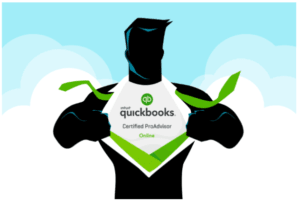
The allocation base is a measure of activity such as direct labor hours, machine hours, or units produced that is used to assign overhead costs to products or services. The chosen base should have a strong correlation with the incurrence of overhead costs to ensure that the overhead is allocated fairly and accurately. For example, if overhead costs are driven primarily by the use of machinery, then machine hours might be the most appropriate allocation base. This rate is typically expressed as a cost per unit of the allocation base (e.g., cost per direct labor hour).

Enable Business to Calculate Profitability without Waiting for Actual Result

In this example, the guarantee offered by Discount Tire does not include the disposal fee in overhead and increases that fee as necessary. It’s a completely estimated amount that changes with the change in the level of activity. This can be best estimated by obtaining a break-up of the last year’s actual cost and incorporating seasonal effects of the current period. This option is best if you’re just starting out and don’t have any historical data to predetermined overhead rate work with.
Tools for Managing Predetermined Overhead Rates
If the predetermined overhead rate calculated is nowhere close to being accurate, the decisions based on this rate will definitely be inaccurate, too. That is, if the predetermined overhead rate turns out to be inaccurate and the sales and production decisions are made based on this rate, then the decisions will be faulty. When there is a big difference between the actual and estimated overheads, unexpected expenses will definitely be incurred. Also, profits will be affected when sales and production decisions are based on an inaccurate overhead rate. Hence, it is essential to use unearned revenue rates that determine how much of the overhead costs are applied to each unit of production output.
Direct Labor Cost Example

Costs must thus be estimated based on an overhead rate for each cost driver or activity. It is important to include indirect costs that are based on this overhead rate in order to price a product or service appropriately. If a company prices its products so low that revenues do not cover its overhead costs, the business will be unprofitable. The production manager has told us that the manufacturing overhead will be $ 500,000 for the whole year and the company expected to spend 20,000 hours on direct labor. The management concern about how to find a predetermined overhead rate for costing. When companies begin the planning process of manufacturing a product, cost projections are a large and important focus.
- In other words, a company’s rent will not change if they produce 1000 units in a reporting period or if they don’t produce any units.
- If estimated overhead differs significantly from actual overhead, there will be an overapplied or underapplied overhead.
- Using a cost driver that is not strongly correlated with overhead costs can lead to distorted product costs, potentially impacting pricing decisions and profitability analysis.
- However, the variance between actual overhead and estimated will be reconciled and adjust to the financial statement.
- The computation of the overhead cost per unit for all of the products is shown in Figure 6.4.
Features like automated categorization and reporting provide real-time visibility into overhead costs. Carefully tracking overhead expenses is key for small businesses to optimize costs. This involves categorizing all overhead costs and regularly analyzing them to identify potential savings. Analyzing overhead rates by department in this manner helps identify problem areas and opportunities to improve profitability.

Steps in Using Predetermined Overhead Rates
Overhead expenses are items that are required to sell products and run the company in general. The cost of these items is not dependent upon the total number of units produced by the company. In other words, a company’s rent will not change if they produce 1000 units in a reporting period or if they don’t produce any units. The interdependency between these three areas highlights the necessity of a well-coordinated approach to cost management. Effective communication between the plant, the accounting Remote Bookkeeping department, and the factory floor is key to achieving accurate overhead allocation and driving profitability.
Predetermined Overhead Rates vs. Activity-Based Costing (ABC)
- Therefore, the single rate overhead recovery rate is considered inappropriate, but sometimes it can give maximum correct results.
- Compared to predetermined overhead rates, ABC generally provides a more accurate allocation of overhead costs, particularly in complex manufacturing environments with diverse products or services.
- Once a company has determined the overhead, it must establish how to allocate the cost.
- This method ensures that each job is charged for the overhead it incurs, leading to more accurate job cost records and enabling businesses to price their products or services more effectively.
- Sales of each product have been strong, and the total gross profit for each product is shown in Figure 6.7.
- First, estimate the total amount of overhead costs expected to be incurred during the period (typically a year).
Remember that product costs consist of direct materials, direct labor, and manufacturing overhead. A company’s manufacturing overhead costs are all costs other than direct material, direct labor, or selling and administrative costs. Once a company has determined the overhead, it must establish how to allocate the cost.
The choice of selecting any absorption basis depends on the judgment and common sense; especially depends on the type of the manufacturing activities. When making pricing decisions about a product, the management of a business must first understand what the costs of the product are. If the management does not consider the cost of the product when setting its price, then the price of the product may end up being too unrealistic. However, if the business sets the price of the same product as $1, without considering its cost, then the business will make huge losses on the product. Based on the above information, we must calculate the predetermined overhead rate for both companies to determine which company has more chance of winning the auction.